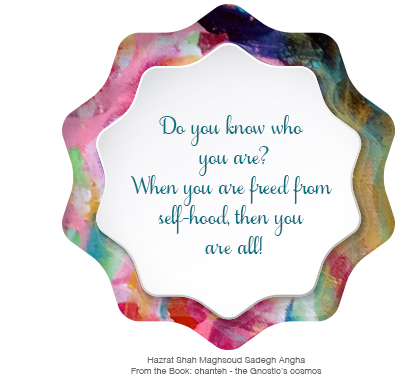Sufism through History
Part II (1200s – 2006 AD/ 600s – 1427 AH)
Allegories have been a favorite mode of expression for Sufis. Nezami (1141-1209 AD) contributed The Story of the "Haft Paykar" or "The Seven Princesses", and wrote the famed epic love story of Laylee and Majnun which is a profound spiritual allegory. Folk versions of Laylee and Majnun have been told from North Africa to India.1
The best known allegory in the West next to The Thousand and One Nights, which includes the story of Aladdin, is Farid ud-Din Attar’s (d.1220 AD) The Conference of the Birds2. The story recounts the longing of a group of birds who desire to know the great Simorgh, the beloved king. The birds under the guidance of a leader (Hoopoe) with passion and enthusiasm start their journey toward the land of Simorgh. But one by one, they drop out of the journey, each offering an excuse and unable to endure the journey. Eventually only thirty birds or si morgh (in Persian) remain as they finally pass through the Seven Valleys and arrive in the land of Simorgh. They seek permission to see the Simorgh, but their request is turned down, the thirty birds or si morgh, in love and rapture annihilate and die from their physical realm, and enter the realm of their soul. There to their amazement, they realize that in fact the great Simorgh they have been seeking all along is their own true identity. In other words, the Simorgh or the truth is the si morgh or the reality of the 30 birds. They realize this has been a journey of self-knowledge for them, to discover their truth.
In this story, the Hoopoe who leads the birds is used as an allegory of a Sufi master leading his pupils to enlightenment. The birds must cross seven valleys in order to find the Simorgh. These represent the stages that a seeker of the truth must pass through in order to cognize God through cognizing his/her true self.
The great and most beloved Sufi poet in the West is Jalaleddin Rumi (1207- 1273 AD), also known as Molavi. A conventional religious teacher, he was transformed at age 37 by the unexpected appearance of a wandering dervish named Shams Tabrizi. He found in Shams a mirror of the Divine Beloved. Rumi also joins Oveyssi’s school from two different sects: on his father’s side Baha al-Din Valad, who was a disciple of the famous Sufi Najmedin Kobra, and his beloved master Shams Tabrizi, who himself was a disciple of Baba-Kamal Jondi, who, in turn was the disciple of Sheikh Najmedin Kobra Oveyssi. His Masnavi alone comprised six volumes, and expresses the loves of his lover: "Whoso falls into Love’s hands weeps like a cloud; whoso swells far from Love freezes like snow."3
The noble Semnani (1261-1335 AD) left the court to devote his life and his vast wealth solely to God, writing both poetry and prose extensively: "When I picked up the flower of love, I wounded the Intellect’s eye with a hundred thorns."4 Amir Seyyed Ali Hamedani (1313-1384 AD), known as "the second Ali" for greatness of rank, migrated to Kashmir with 700 followers.
Shamseddin Hafez Shirazi (d.1389 AD), another well–known Iranian Sufi poet with a worldwide reputation who has inspired great philosophers and poets all over the world and who is much admired, especially by the German philosopher Goethe, was also a member of the Oveyssi School of Sufism. He was the disciple of Sheikh Mahmoud Attar Shirazi, who was the disciple of Pir Golrang.
From the fifteenth century to the present time, great Sufis have continued to emerge; Sufis such as Seyyed Mohammad Nourbakhsh (d. 1464 AD), Shah Ghassem Faizbakhsh (d.1520 AD), Darvish Mohammad Mozaheb Karandehi (d. 1627 AD), Seyyed Abdolvahab Naini (d.1798 AD), Haj Mohammad Hasan Kouzeh-kanani (d. 1834 AD), and Hazrat Agha Abdolghader Jahromi (d.1884 AD).
Hazrat Jalaleddin Mir Abolfazl Angha (1849-1915) the 39th Master of the Oveyssi School
Hazrat Mir Ghotbeddin Mohammad Angha (1887-1962)
Hazrat Shah Maghsoud Sadegh Angha (1916-1980)
Hazrat Salaheddin Ali Nader Angha (Sufi Master of M.T.O. Shahmaghsoudi® School of Islamic Sufism®)
